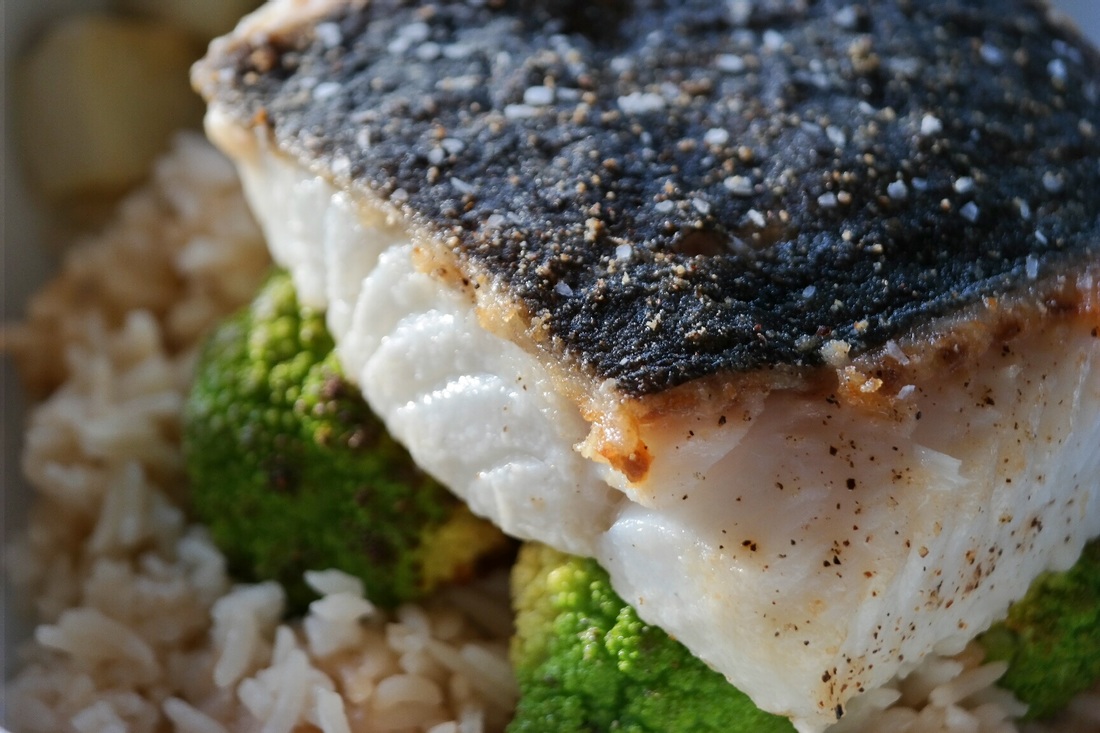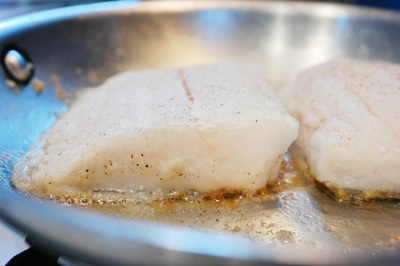Weeknight meals are about speed and simplicity...Tired and drained from a full day of work - how fast can you make a meal that tastes great and doesn't leave you with a pile of dishes at the end?
Great food doesn't have to be fancy. In fact, simplicity is sometimes the best way to go! For the next few weeks, I'm going to post super easy, quick-to-make foods that can be paired with a simple vegetable, pasta, rice, or leftover sides from the weekend.
Great food doesn't have to be fancy. In fact, simplicity is sometimes the best way to go! For the next few weeks, I'm going to post super easy, quick-to-make foods that can be paired with a simple vegetable, pasta, rice, or leftover sides from the weekend.
First on the "Simple Weeknight Gourmet" menu is one of the fastest recipes I have in the repertoire: Pan-Roasted Fish.
I've heard from many that cooking fish can induce some stress and anxiety - the fish sticks to the pan, it's overcooked and dry, it's undercooked and scary...Whatever the fear, there's an easy way I'm about to share that can work for any fish filet (with or without skin).
I've heard from many that cooking fish can induce some stress and anxiety - the fish sticks to the pan, it's overcooked and dry, it's undercooked and scary...Whatever the fear, there's an easy way I'm about to share that can work for any fish filet (with or without skin).
Pan-Roasted Fish Filet
- Fish filet (preferably with skin), 1 piece for each person you're feeding
- All-purpose flour, as needed
- High-heat oil (canola, vegetable, sunflower, grapeseed, etc. - NOT OLIVE OIL), as needed
- Salt, as needed
- Pepper, as needed
Culinary Dance Steps
- Lightly coat the top and bottom sides of each fish filet with flour.
- In a large frying pan, heat the pan on high heat until it the pan sizzles if you drop a little water in it.
- Add enough oil to the pan to to coat the bottom of the pan a few millimeters up. We're not deep frying the fish, but we do need a little more oil than just lightly coating the pan because the floured fish will suck up a good amount of oil.
- Depending on the size of you pan, add 1-3 pieces of fish to the pan, skin side down. Don't overcrowd the pan, or the fish won't cook properly. After the fish is in the pan, give the pan a little shake to loosen the fish from the pan and keep it from sticking.
- If you have thinner pieces of fish, turn down the stove to medium-high heat. If you have thick pieces of fish, turn the stove heat down to medium.
- With a spatula, gently press the tops of the fish down into the pan. Once the fish hits the hot pan, it will look like it is shrinking because the fish is "tensing up". You want to help it relax with a gentle pressing massage. :) Do this "gentle massage" throughout the cooking process if you start to see the fish tense up and shrink again.
- Let the fish cook most of the way through while it's on the skin side down. You can tell the fish is ready to by checking the sides of the fish filet, as fish becomes more opaque as it is cooked.
- Once the fish is mostly opaque up the sides, use a spatula to gently flip the fish pieces onto the other side. You can use your other hand to help the fish gently land back on the pan.
- Turn off the stove, and let the flipped fishes sit in the pan for 2-3 minutes. This will let the fish finish cooking from the residual heat of the pan. Serve fish hot, skin side up!
- If you're making more than one pan's worth of fish, get a few pieces of paper towel, wipe the inside of the pan to clean it from the leftover flour and crispy bits. Then repeat steps 3-9, wiping the pan between each batch. If you don't feel like doing fish in batches, you can cook them in multiple pans at the same time!






